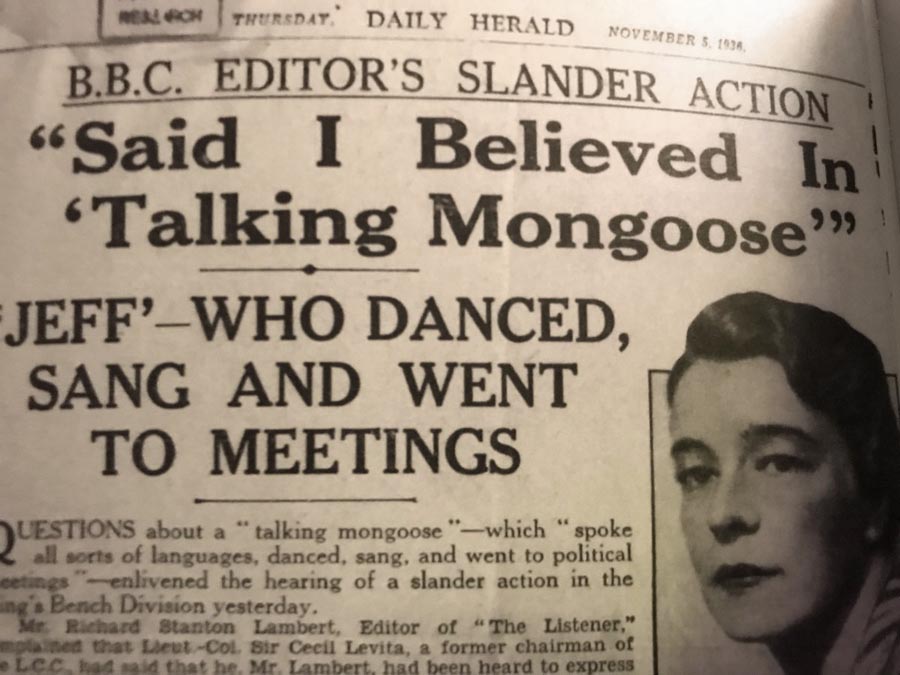
Become a Patron!
In our second episode on the grim folklore of Walpurgisnacht — that is May Eve or April 30, St. Walburga’s day — we meet Walburga, the saint whose name was attached to what was likely a pre-existing pagan holiday.
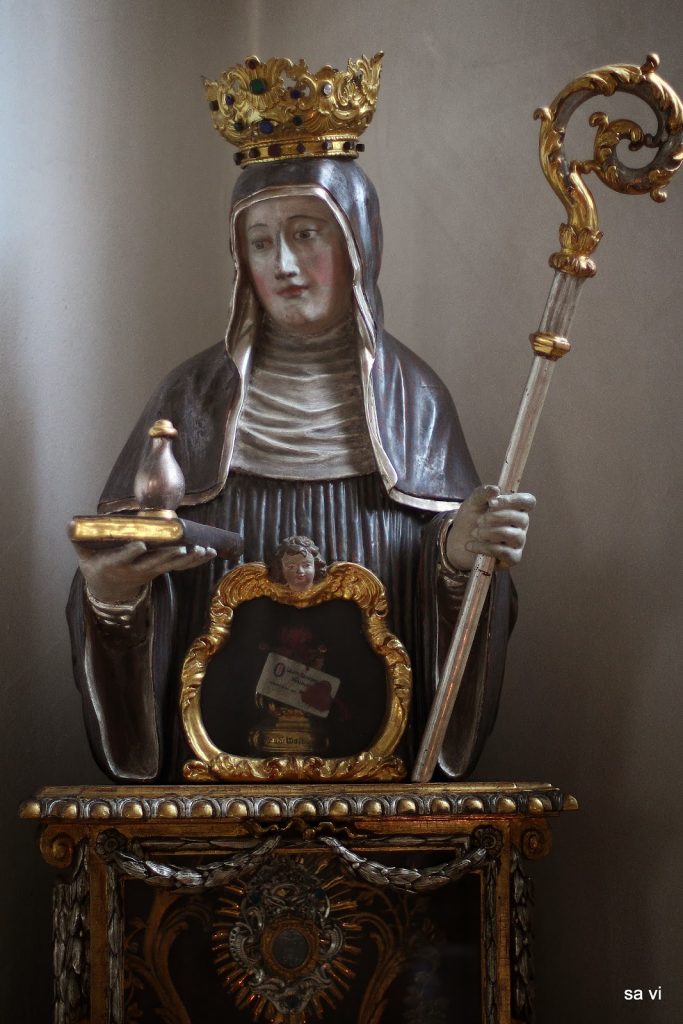
While the saint’s bones for centuries have been said to be the source of a miraculously curative oil, namesake children dedicated to her have a significantly less holy reputation, with Walburga Oesterreich being a particularly notorious example known for her involvement in a bizarre murder we’ll briefly discuss.
More practices associated with Walpurgisnacht are provided by the highly influential, if a bit outdated, armchair anthropologist Sir James Frazer, of Golden Bough. The association between this day dedicated to the obscure German saint and witchcraft becomes clear as we examine the many prophylactics against evil spirits afoot on the occasion. Listen close so you know what to do with the black and red spotted hemlock! Keep that bonfire stoked…
“So far as the light of the bonfire reaches, so far will a blessing rest on the fields.”
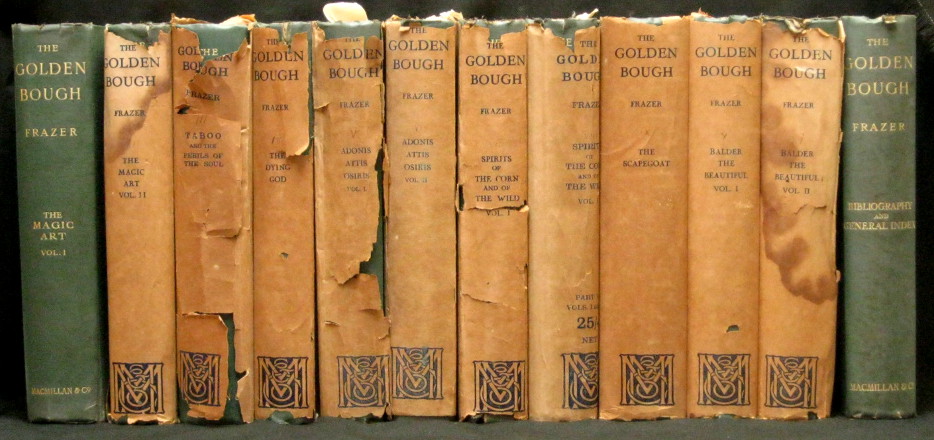
Then we jump into real nexus of that association between witchcraft and Walpurgisnacht, that is, the play Faust by Johann Wolfgang von Goethe, which not only established the night as a notorious witches’ sabbath, but also did much to localize to Germany’s Blocksberg (or Brocken) mountain. A Cliff Notes encapsulation of the witches sabbath scene is rather flippantly re-enacted for your audio enjoyment, wherein you will hear this oft quoted passage from Goethe:
Now, to the Brocken, the witches ride;
The stubble is gold, the corn is green;
There is the carnival crew to be seen,
And Master Urian will come to preside.
So over the valleys, our company floats,
With witches a-farting on stinking old goats.
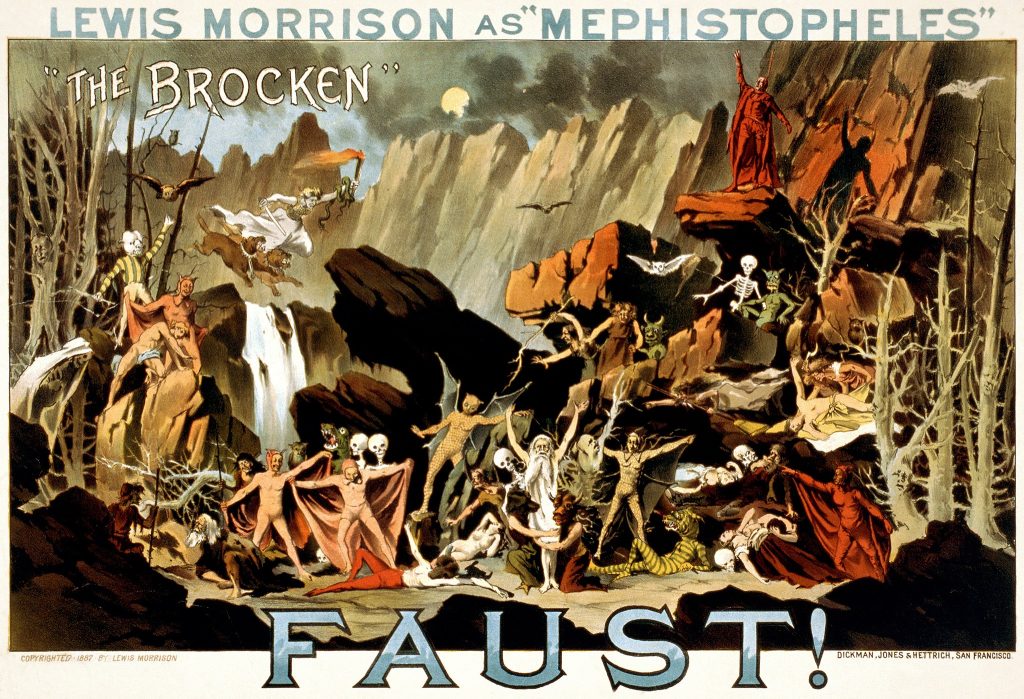
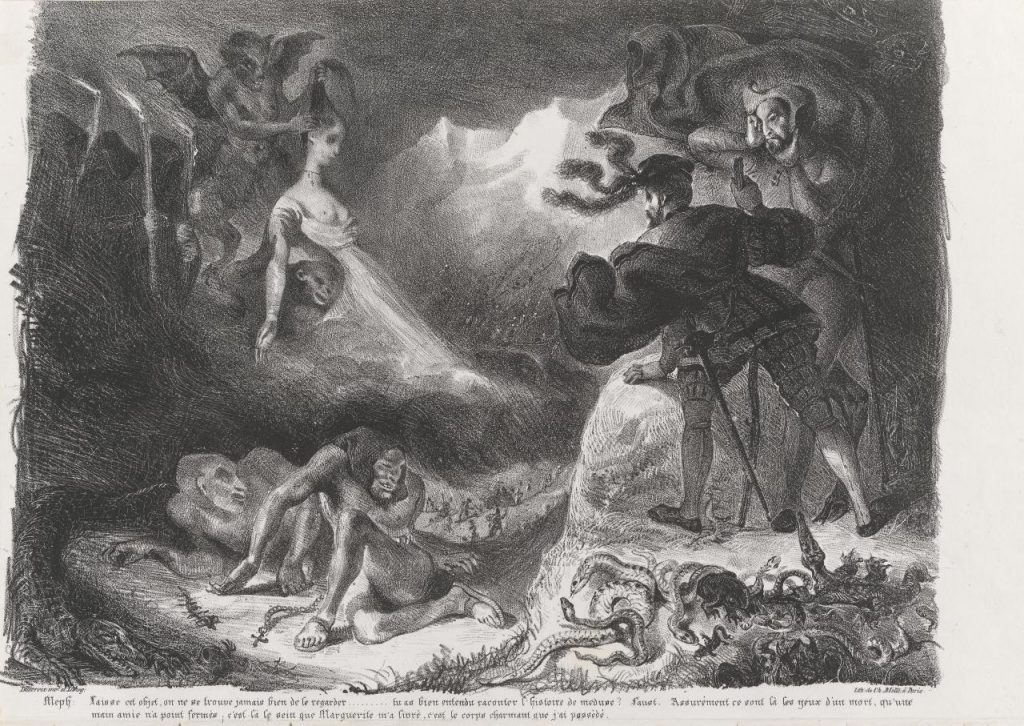
We discuss the mythology of witches and mountains a bit more generally, surveying a few other German mountains upon which or within which lost souls and dabblers in witchcraft are said to play or reside. Then we get into some details on the Blocksberg relationship to witches, and the 1688 book which spread the reputation of the Blocksberg and inspired Goethe. Herein we are provided with many useful specifics such as the manner of transport the witches use to reach the mountain. Among the methods catalogued: flying with the assistance magic salves or on brooms, shovels, or pitchforks. Or on flying animals: goats, calves, wolves, Cats and dogs are listed. I don’t think it says how the animals can fly.
Along the way, we learn how specific features of the landscape on and around the Brocken have developed their own mythologies and associations. Such tales have always drawn the curious, and Walpurgisnacht tourism associated with this mountain, and indeed the whole legend-rich Harz mountain region wherein the Brocken lies, has grown over the centuries, as attested to by artifacts like the postcards collected below.
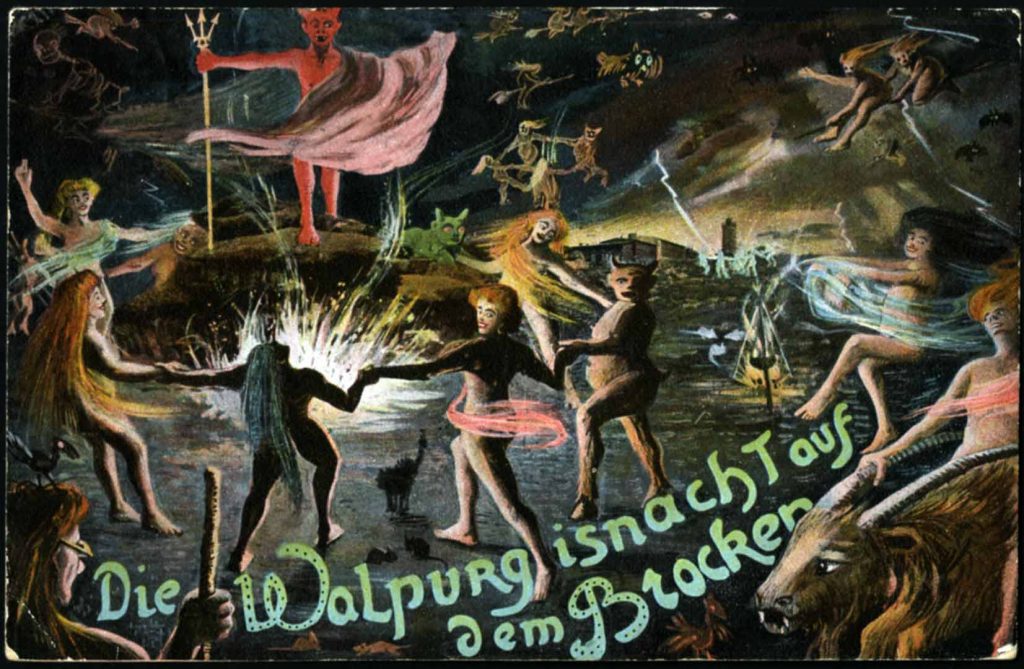
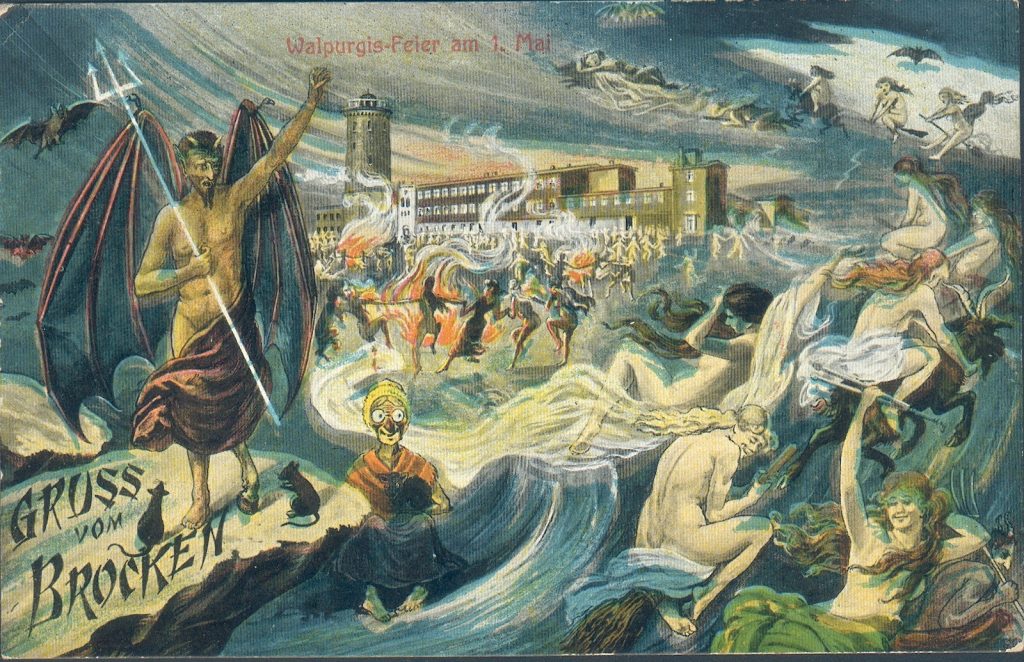
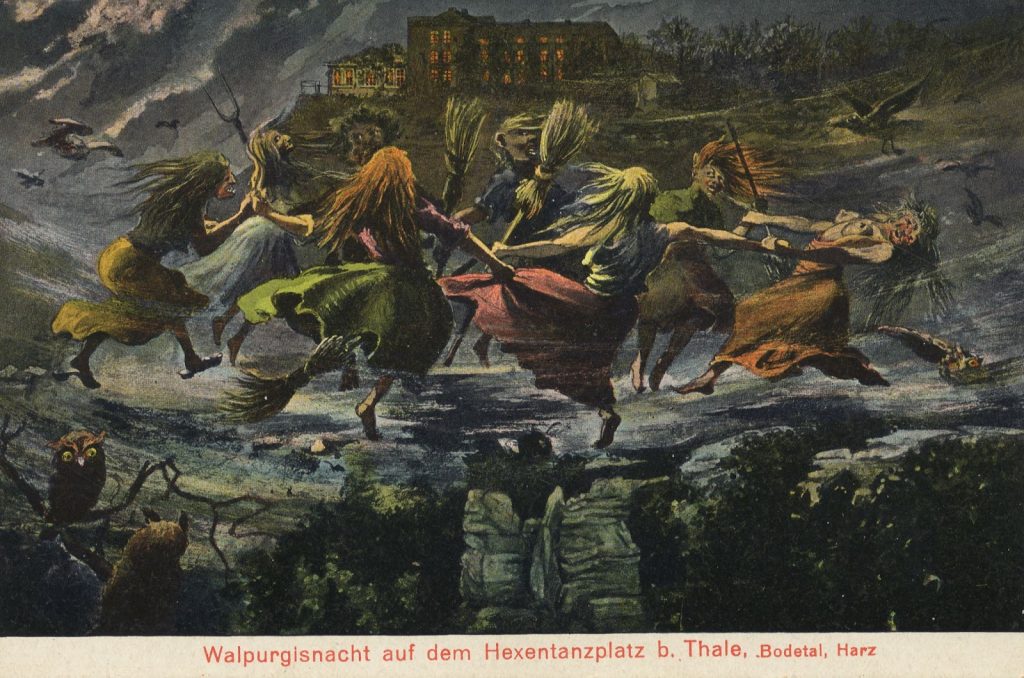
While the ominous reputation of the mountain may have lost something in our present day, modern celebrations of Walpurgisnacht are nothing if not enthusiastic… (Below, the “gone viral” video mentioned in the episode.)
Then there’s the Brocken Specter, a weird optical phenomenon that takes its name from the mountain. It appears in low-hanging clouds or mist as a huge, looming, elongated shadowy encircled by a rainbow halo and is caused by the sun behind human figure projecting a shadow on the clouds when atmospheric conditions. More than all my babbling in the podcast, videos like the one below may convey some of its eerie effect…
Last but not least we have a look at paranormal researcher and prankster/publicity hound Harry Price and his shenanigans atop the Blocksberg in 1932. A photo from his highly theatrical reenactment of “The Blocksberg Tryst,” a 15th-century Walpurgisnacht ritual supposedly once conducted on the mountain with miraculous results below…
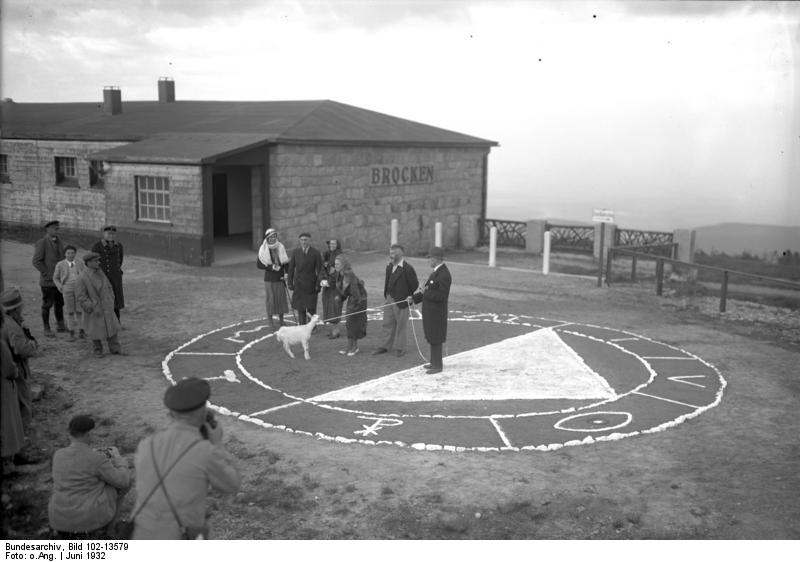
NOTE: My apologies to all listeners for an uncorrected mispronunciation in Episode 2, namely the hard “G” in the name of the talking Mongoose “Gef” investigated by paranormalist Harry Price. Apparently, the animal informed witnesses that his name was “Jeff,” but was not very good at spelling when called upon to spell it out. You can find more on Gef from our friends at The Folklore Podcast.
